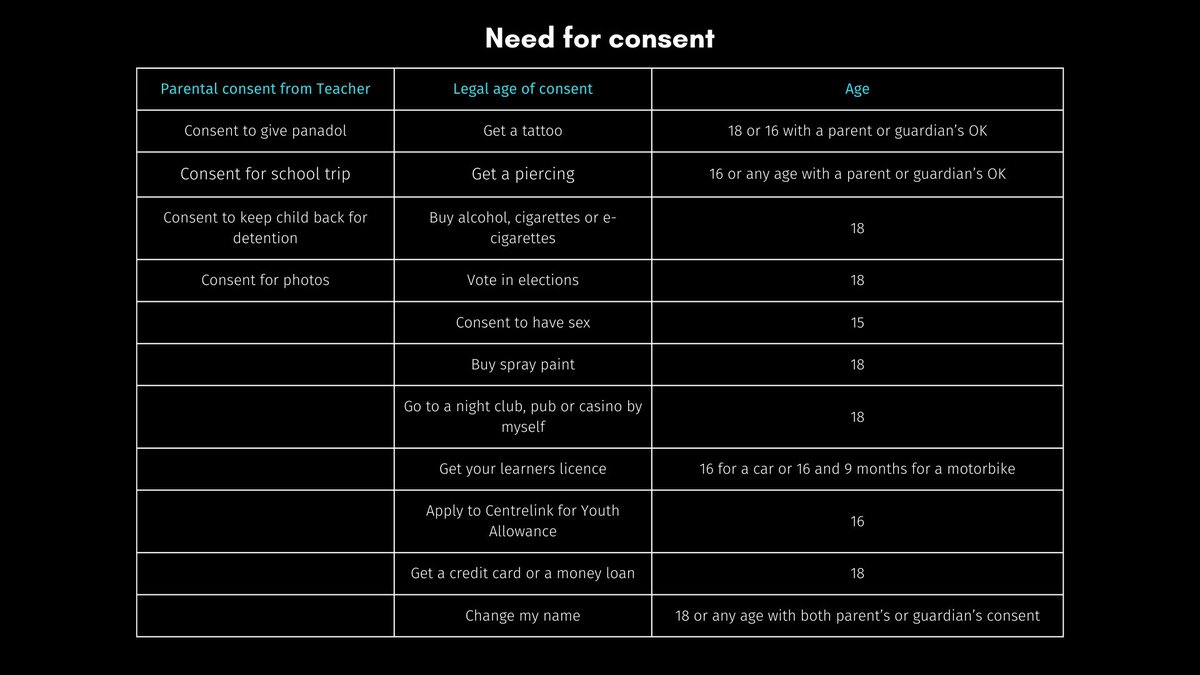#KatherineDevesIsRight we have seen that the State has removed children under 16 from their parents for surgical intervention, first publicised case Nov 2020 in WA, where a gay autistic girl was removed for amputation of her breasts at 15 years old. But there's more .../1 
https://twitter.com/michaelkoziol/status/1515871920713248771

@michaelkoziol as early as Sept 2021 up to a 100 families have had their kids taken by the State, for 'gender affirming care' aka surgical alteration of bodies, amputations of breasts and genitalia of CHILDREN. I can personally confirm it. ONE HUNDRED + KIDS by now. #KathDeves 

How is this happening you ask @michaelkoziol maybe you should do some research, cause it's there in black and white. When it comes to Gender Identity or Trans Ideology the State schools can transition a child without the consent or knowledge of the parents /3 #KathDevesIsRight 

And it would amaze parents @michaelkoziol because needing to give a kid a Panadol, or to take a photo of them, or permission for a school trip requires permission by the School from the parent, right? So why would they think, that the school can socially & medically trans a kid? 

Only in this situation @michaelkoziol gender identity affirmation, are parental rights suspended, even though a pathway of cross-sex hormones and puberty blockers lead to sterilization, sexual dysfunction, bone density issues and much more. #KatherineDevesIsRight 

What happens next @michaelkoziol ? Once the school decides, the example Im using is the State of Victoria, the school decides to make a PLAN, that takes the child through all the stages of transitioning, #KatherineDeves LISTENED to LGB people that's how she knows about this! 

What @michaelkoziol does this plan look like, it's a bit of conveyor belt it can start with changing names in the school, documentation... then social transitioning... 

2 parts to social transitioning @michaelkoziol 1. the child, binders for girls, 97% find restricts breathing and causes chest and breast damage, boys in girls toilets, who cares if it bothers little girls? The parent of this little girl does bit.ly/36qRzKs 

2nd part @michaelkoziol is often the collaboration of the WHOLE SCHOOL in perpetuating a lie, and if the school thinks it's okay, hiding the transitioning of their child from the parents. Nothing like other children learning from the school deceit is OKAY, if the school says so. 

Next stage @michaelkoziol is Medical transitioning, things get interesting here, this involves castration and late-stage cancer drugs that are called 'puberty blockers' they're HARMFUL and EXPERIMENTAL. indefenceofchildren.org/puberty-blocke…, indefenceofchildren.org/puberty-blocke… 

Almost inevitably kids that go on puberty blockers go next to cross-sex hormones, and I have no words for people who do this to children. So I understand why Kath Deves said what she said because #KatherineDevesIsRight 



I wish @michaelkoziol you were a journalist, do your homework. There are over 27,000 detransitioners on redit, now young adults regretting the decisions made in youth as 'mature minors'
indefenceofchildren.org/detransitoners
indefenceofchildren.org/detransition-r… Young people that #KathDeves has talked to
indefenceofchildren.org/detransitoners
indefenceofchildren.org/detransition-r… Young people that #KathDeves has talked to

So yes @michaelkoziol given that she has met and talked to detransitioners and heard their stories, and knowing how many are affected. YES, she's speaking up for them and saying NO MORE stolen generations, not for white kids, brown kids not for ANY KIDS! #IStandWithKatherineDeves 

I usually have this pinned to my profile, so I'm adding it here:
How you put in place laws that mandate irreversible
damage to children, that not only is fiercely defended but is essential for building a 5.2 trillion dollar industry. It's 9 minutes long.
How you put in place laws that mandate irreversible
damage to children, that not only is fiercely defended but is essential for building a 5.2 trillion dollar industry. It's 9 minutes long.
• • •
Missing some Tweet in this thread? You can try to
force a refresh





